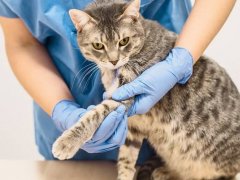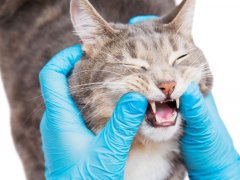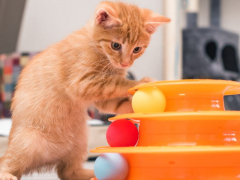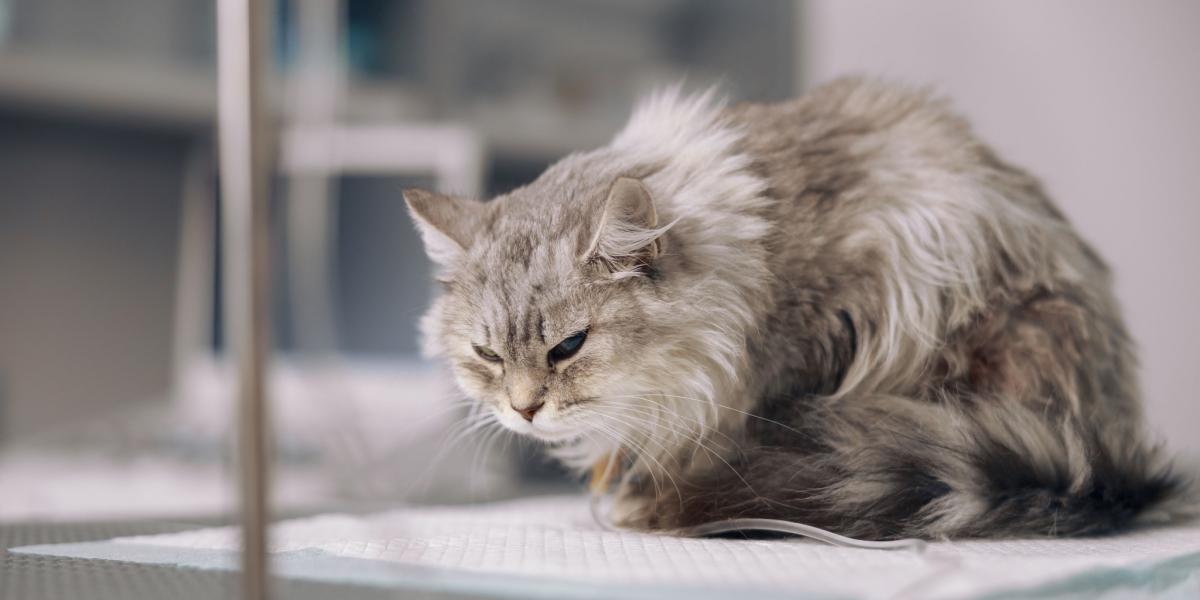
As cat owners, we want our cats to be healthy and happy. The thought of them being in any sort of pain or discomfort is upsetting and worrying.
Often, it’s obvious when our cat is in pain, like when they come through the back door holding up one of their paws and they’re clearly limping. But this isn’t always the case and some illnesses can be difficult to detect.
Cats instinctively hide pain, so it can sometimes be difficult to spot signs of pain in your cat. The most common signs of pain in cat include an obvious injury, vocalization, lethargy, sleeping more than usual, changes in appetite or litter box usage, and changes in behavior and routine. If you think your cat is experiencing pain or discomfort, schedule a visit with your veterinarian to find out what's causing it.Key Takeaways
Cats generally try to hide any signs of sickness so it can be hard to know when they’re in pain. Read further to find out the 12 common signs of pain in cats and how to help them.
Also Read: Arthritis In Cats: Causes, Symptoms, & Treatment
Cats in Pain—the Great Pretenders
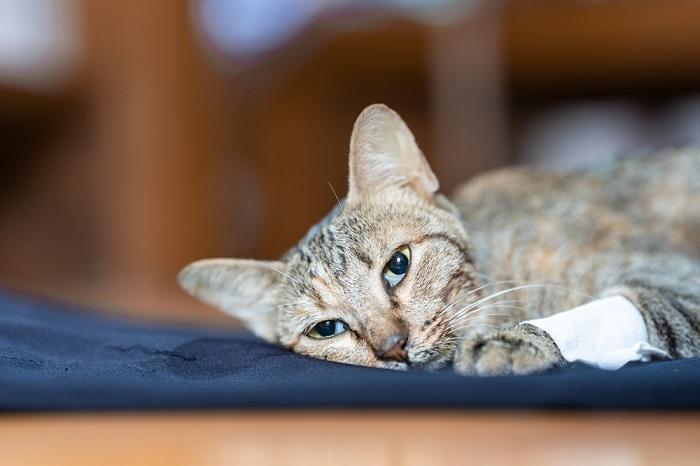
By the time cats show clear signs of pain and illness, their condition is usually quite poor.
Cats are very like their wild ancestors. In the wild, cats would have hidden any sign of illness as it would have indicated weakness. Weakness would have decreased their chance of survival and made them more vulnerable to predators. Even though our pet cats don’t necessarily face the same challenges, they still try to hide illness as their ancestors did.
Spotting signs of pain and illness can be difficult in cats. They’ll often continue as normal until they can’t hide it anymore and start showing symptoms. For this reason, they are often known as “the great pretenders” because they pretend like they’re OK.
Also Read: 10 Causes Of Aggression In Cats And How To Help
Different Types of Pain
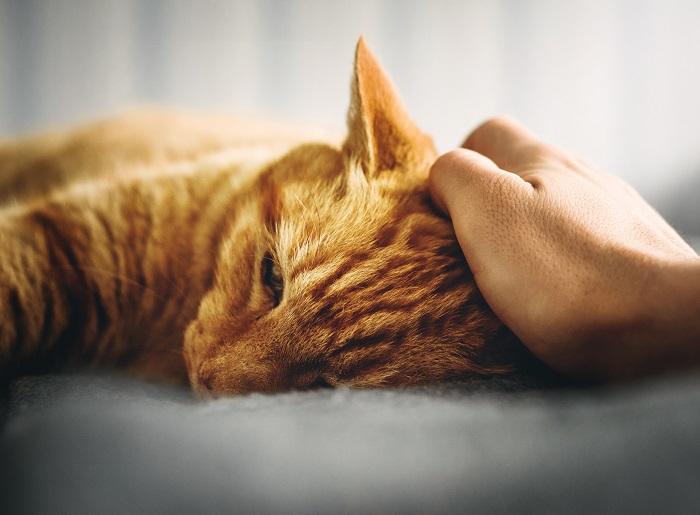
Pain can be sudden and new (acute), or ongoing (chronic).
Pain in cats can present in many different ways. Similar to humans, cats experience different types of pain—acute pain and chronic pain. Acute pain is often from an injury or sudden illness and signs can be more obvious. Chronic pain is ongoing and can have more discreet signs and be difficult to spot.
Causes of Acute Pain
Acute pain is usually caused by sudden injury or illness, which can sometimes be life-threatening. It causes immediate symptoms and discomfort to your cat.
Examples of causes of acute pain in cats include:
- Broken bone (fracture)
- Soft tissue injury (damaged muscle or ligaments)
- Stomach upset (vomiting, diarrhea)
- Infection (such as an ear infection, wound infection, and more)
- Inflamed bladder (cystitis, urinary tract infection, urinary blockage)
- Skin allergy
- Dental disease (painful teeth)
- Post-surgery
Also Read: What Can You Give A Cat For Pain? 6 Vet-Recommended Options
Causes of Chronic Pain
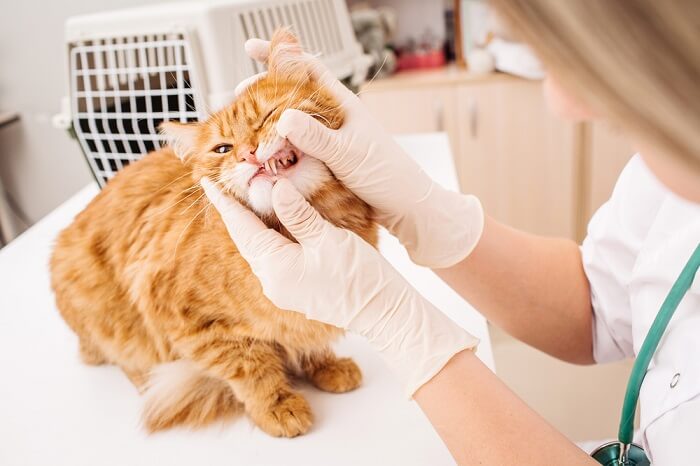
Chronic pain occurs from an injury or illness that causes persistent discomfort.
Chronic pain is any injury or illness that causes persistent discomfort. Chronic pain can be at a low level of pain or a high level. Either way, chronic pain is very debilitating.
Conditions that can cause chronic pain include:
- Arthritis (joint pain)
- Ongoing stomach issues (e.g., inflammatory bowel disease)
- Dental disease
- Bladder issues (such as feline lower urinary tract disease)
- Chronic skin conditions
- Organ pain (e.g., kidney disease or chronic pancreatitis to mention a few)
- Matted fur pulling on skin
- Overgrown/ingrown nails
This is a brief list as there are lots of conditions that can cause chronic pain. Some conditions are chronic because they didn’t resolve initially and became a long standing issue, such as a sore tooth that didn’t receive treatment and became chronically infected and painful. Other conditions that are chronic in nature require long-term management, such as arthritis.
12 Warning Signs of Pain in Cats
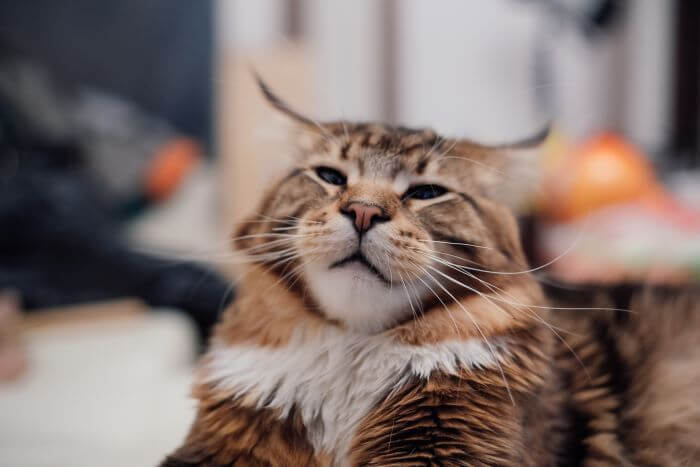
Some signs of pain in cats might be obvious, but others can be subtle.
Now that we’ve established that there are different types of pain, let’s look at the 12 common warning signs that your cat is in pain and crying for helps. Signs of pain in cats can include;
1. Vocalization
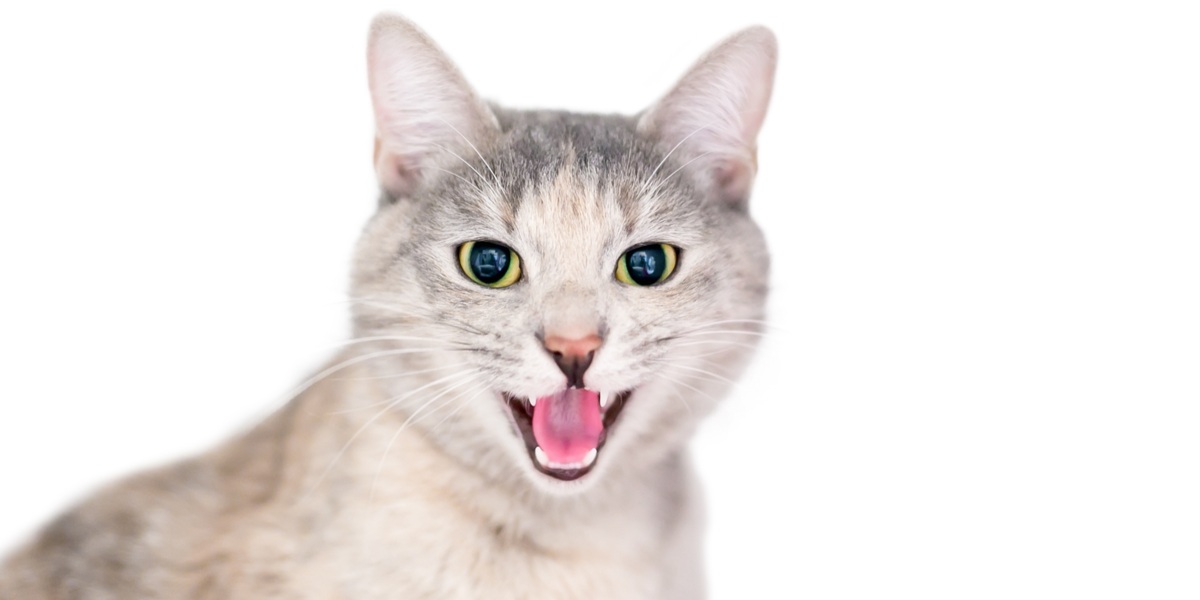
Cats that suddenly begin vocalizing more than they used to could be in pain.
Cats that are in pain might vocalize more than usual. Some cats howl, growl, meow or hiss. They can also purr, which we normally associate with positive interactions, but cats can also purr when they’re in pain, something that could be a self-soothing mechanism. Not all cats that are in pain will vocalize, so a quiet cat doesn’t mean that they’re OK.
Also Read: 7 Common Cat Vocalizations And What They Mean
2. Signs of Injury
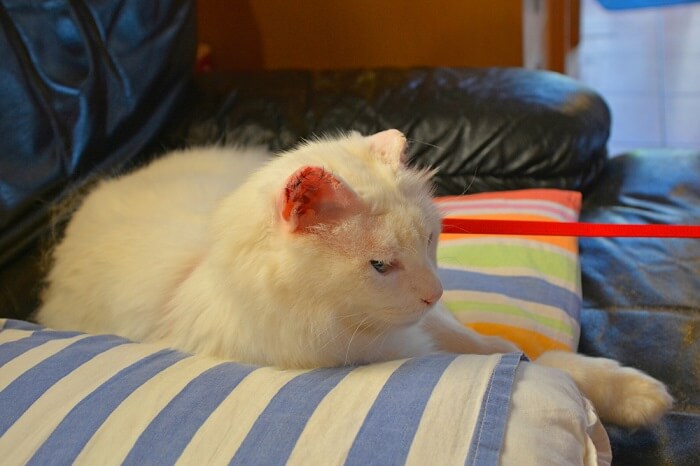
If your cat has a visible injury, they might be in pain, so bring them to the vet to be checked out.
If your cat has visible signs of an injury then we can assume that they’re likely in pain. This would include limping on a leg or bleeding from a wound.
Also Read: Will Cats Fake A Limp For Sympathy?
3. Change in Drinking and Eating Habits
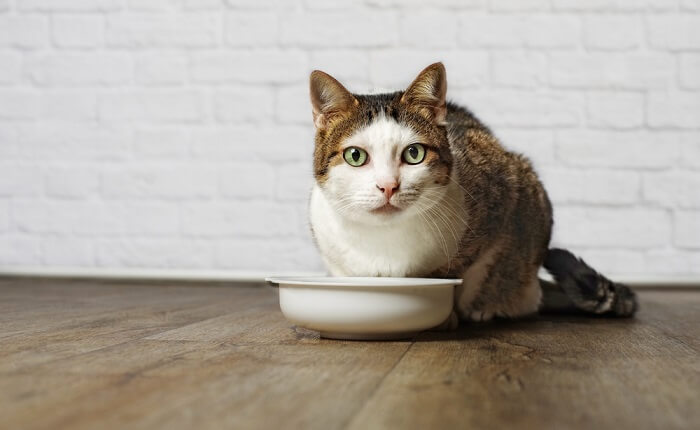
Eating less or not eating at all is a serious sign that something is wrong with your cat.
Cats that are in pain are likely to have reduced appetites and are drinking less. This might be from the health issue itself or because they’re too painful to think about eating or drinking. They might have weight loss and dehydration.
4. Change in Behavior
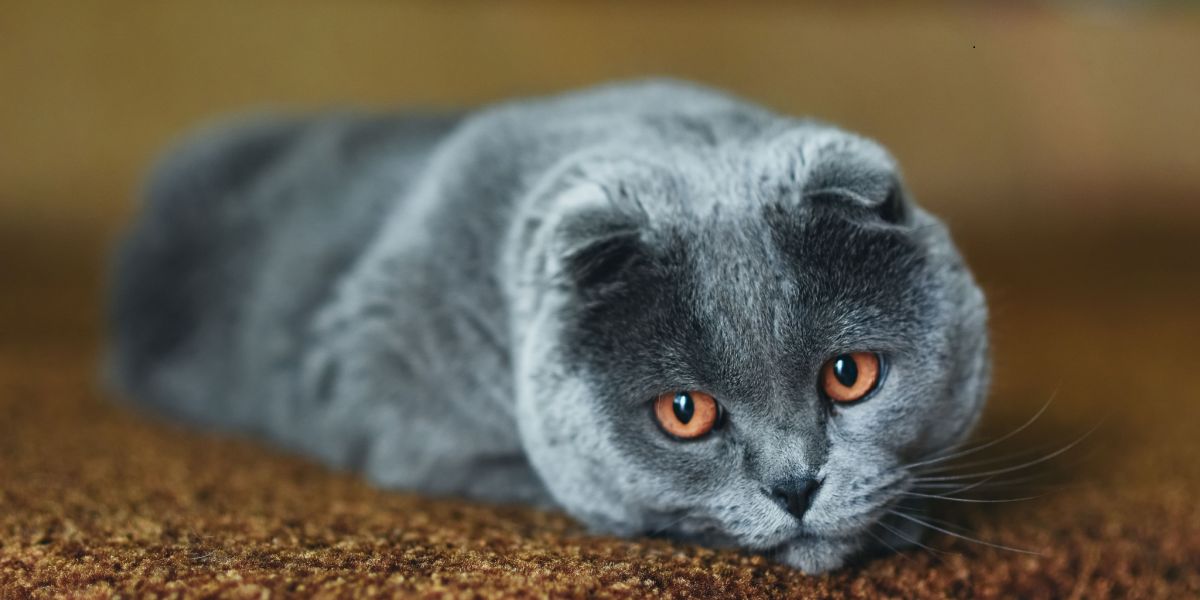
A cat in pain might withdraw or could be stuck to your side.
You might notice a change in your cat’s behavior if they’re in pain. They can be more withdrawn from you or on the other hand they might be clingier. A change in their personality can indicate that something is wrong.
Also Read: 10 Signs You Might Have A Clingy Cat
5. Change in Litter Box Habits
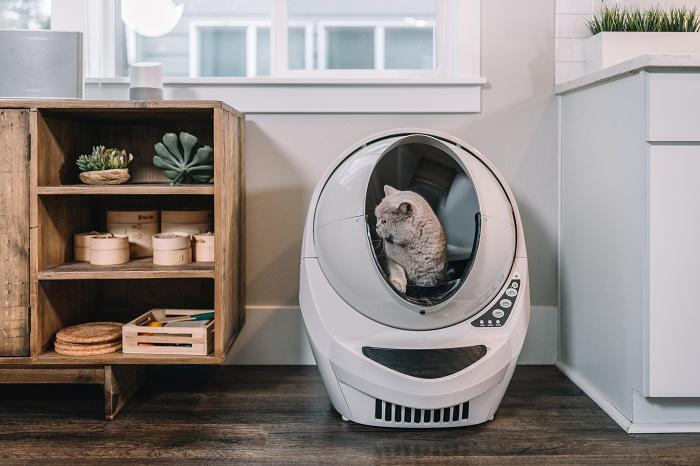
Suddenly not using the litter box is often a sign of illness and/or pain in cats.
Peeing or pooping outside of their litter box is a sure sign that not all is well with your cat. They might be unwell and feeling uncomfortable. Older cats with arthritis might be too painful to climb into the litter box. Cats that are in pain with cystitis or a urinary tract infection might not have time to make it to the litter box.
Also Read: Litter-Robot 4 Review (We Tested It For a Month)
6. Not Grooming
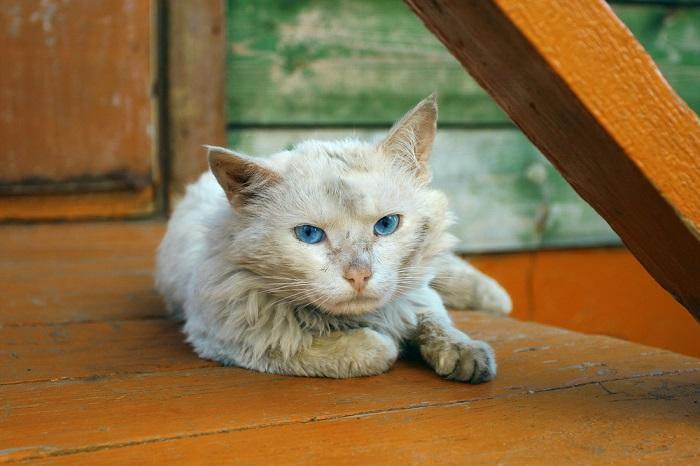
Cats that stop keeping themselves clean might be in pain or feeing unwell.
Cats are meticulously clean and love to groom. So if you notice that your kitty isn’t grooming themselves there could be something wrong. Painful conditions such as arthritis and dental disease can prevent your cat from grooming their coat.
Also Read: 11 Best Cat Brushes & Deshedding Tools For Long & Short Haired Cats
7. Change in Sleeping Routine
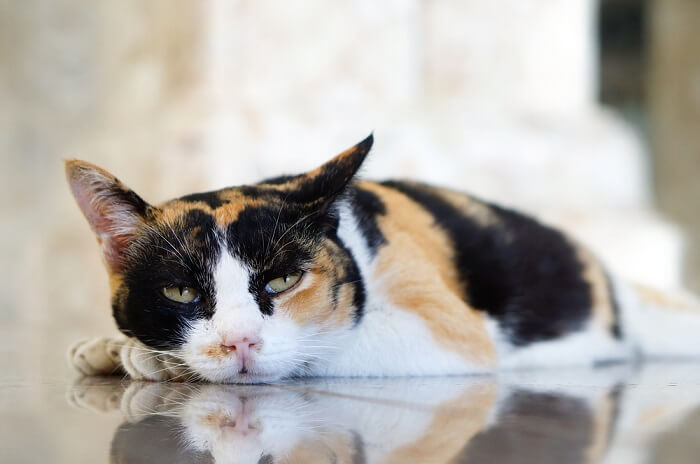
Sleeping more or less than usual can be a subtle sign of pain.
Cats love to sleep but they could be in pain if their sleeping routine changes. Cats that are painful might be too restless to sleep and on the other hand cats that are painful and lethargic might be sleeping more than usual.
Also Read: 8 Most Common Cat Sleeping Positions and What They Really Mean
8. Change in Body Language
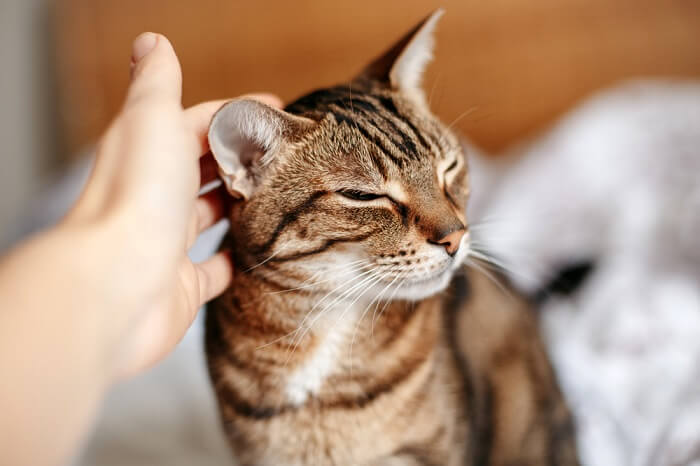
If your cat’s body language looks strange or different, it could be due to a painful condition.
Pain can cause cats to have subtle changes in their body language. This includes a change in their facial expression, such as eyes half closed, ears flattened, or tense muzzle. Pain can also cause a cat to change body posture, including a hunched body, crouching close to the ground, or keeping the paws close to their body. Pay close attention to your cat’s body language to pick up on these signs.
Also Read: What Does It Mean When a Cat Rubs Against You?
9. Decreased Energy and Activity
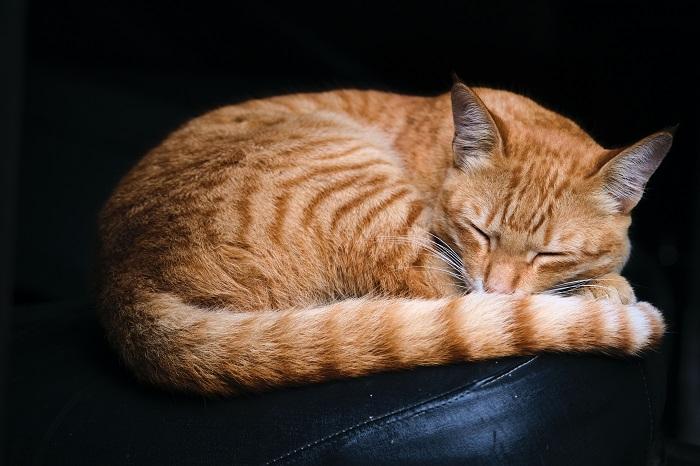
If your cat is lying around not wanting to move much, it could be due to pain.
Your cat might have decreased energy if they’re in pain. You might notice that they’re moving around less (as in the case of arthritic cats) or might be very lethargic (due to pain from an injury such as an infected cat bite abscess).
Also Read: Why Does My Cat Bite Me? And How to Get It to Stop
10. Irritability
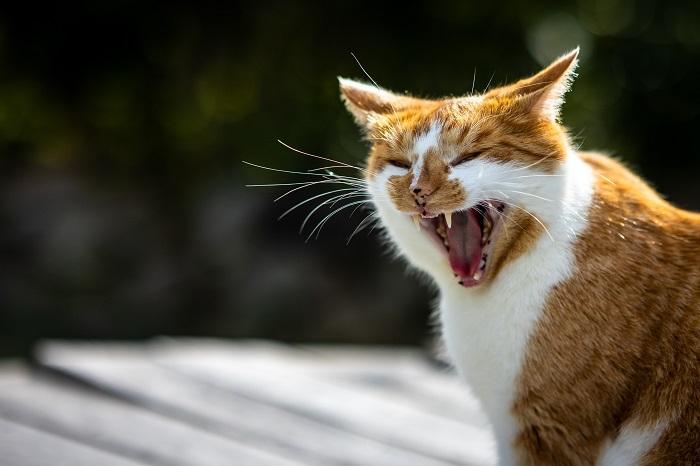
As with people, cats that are experiencing pain may seem grumpy or upset.
When we’re in pain we don’t feel in our best mood. This is the same for cats. Being in pain, both acutely or chronically can affect our patience and make us more irritable. You might notice that your cat is lashing out more than usual or even being aggressive. Don’t take it personally, they might be in pain and this could be how they’re showing it.
Also Read: Why Do Cat Tails Shake Or Quiver?
11. Decreased Interest in Positive Interaction
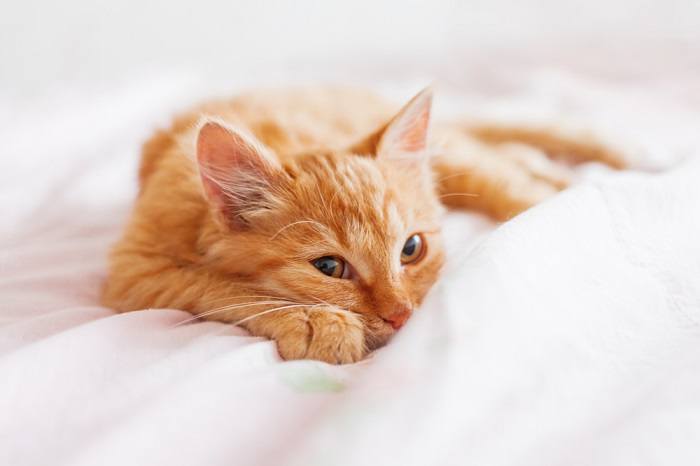
Another subtle sign of pain is if your cat is no longer interested in petting, play, or exploring.
Cats that are in pain are likely to be less interested in positive activities such as playing, going outdoors, and exploring their surroundings. They might be feeling too unwell or too distracted with pain.
12. Symptoms of a Health Issue
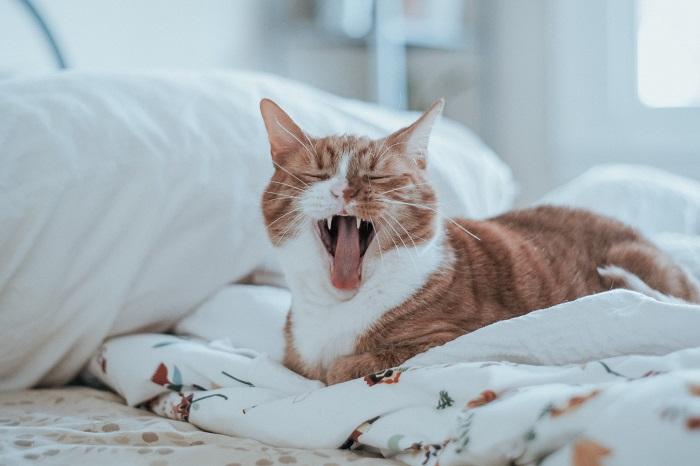
Any time a cat is sick or injured, they could be in pain.
Symptoms of sickness (for example, vomiting, diarrhea, coughing, sneezing) might indicate that your cat is unwell. Many health conditions can cause pain so even if you haven’t noticed a change in your cat’s routine or behavior, signs of illness shouldn’t be ignored.
What Should You Do if You Think Your Cat Is in Pain?
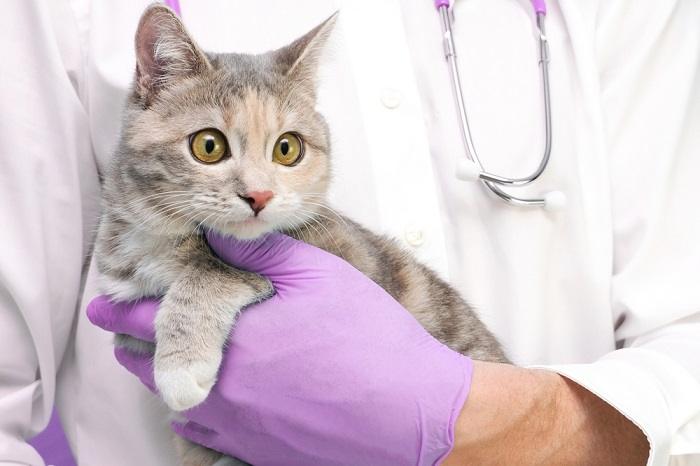
If your cat is showing signs of pain, injury, or illness, do not delay seeking veterinary attention.
If you think that your cat is in any sort of pain or discomfort, you need to schedule a veterinary appointment as soon as you can to determine the underlying cause. It might be nothing but it’s better to get it checked and make sure that your cat isn’t in pain.
Pain can be a sign of many underlying illnesses and conditions. Your vet will ask you some questions about the signs that you’ve noticed and examine your cat to check for any abnormalities.
They might want to do further investigations, which could include blood testing, urine testing, ultrasound, or X-rays. If you have pet insurance it will help with these costs.
Also Read: Cat Bloodwork (Different Types of Tests, Health Conditions And Costs)
How Is Pain Treated in Cats?
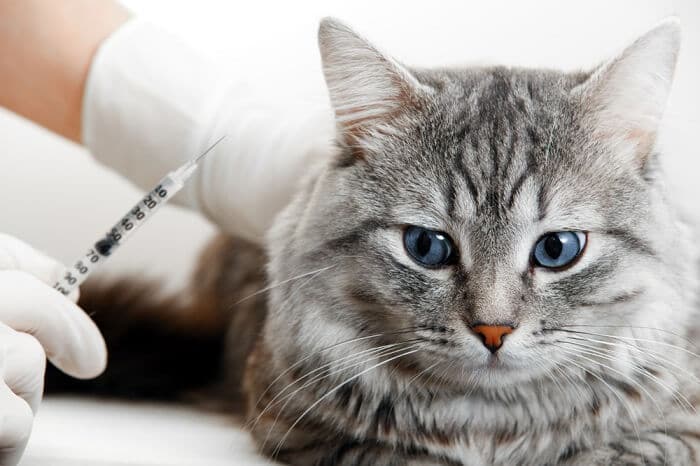
Treating pain in cats depends on what condition is causing the pain.
Painful conditions can be treated in many ways. Your vet will first determine the cause of your cat’s pain and the pain management will be planned based on this.
It can be distressing for us as pet parents to see our feline family members in pain. Unfortunately, many over the counter human pain medications, including paracetamol/acetaminophen (Tylenol) and ibuprofen (Motrin) are extremely toxic to cats. For this reason, you should never give your cat any human medication and their medication should always be prescribed by a veterinarian.
Your vet might prescribe pain relief for your cat, which could include some of the medications below:
- Opioid medication, such as buprenorphine or methadone. These are strong pain killers, usually used in the veterinary clinic for cats undergoing surgery or dental procedures.
- Non-steroidal anti-inflammatory drugs (NSAIDs), such as meloxicam. This is a common anti-inflammatory dispensed to use for pain relief at home. It’s commonly used for pain due to arthritis, soft-tissue injury (e.g., cat bite abscess), and dental disease.
- Gabapentin can be good for neuropathic pain (e.g., hyperesthesia syndrome) and to relax cats before veterinary consultations.
- Anti-nerve growth factor monoclonal antibody therapy, e.g., Solensia. This is particularly useful for osteoarthritis in cats.
- Corticosteroids are useful to provide relief in cases of skin allergies and irritation.
Also Read: Drug Poisoning In Cats: Causes, Symptoms, & Treatment
Pain in Cats: Final Thoughts
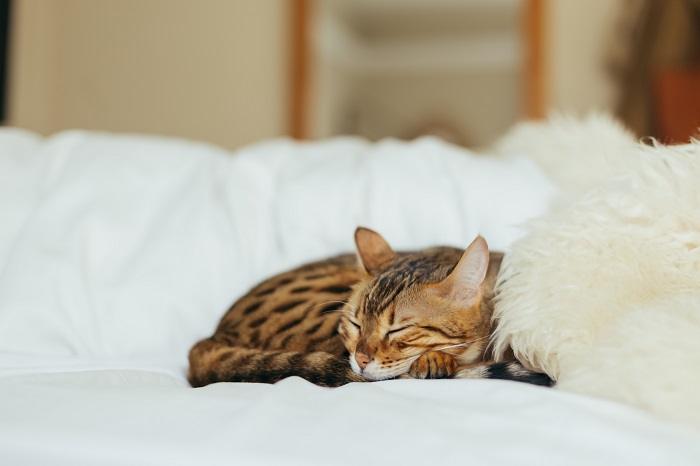
Cats can suffer from acute and chronic pain; both of which can be extremely unpleasant for your cat.
Cats can suffer from acute and chronic pain, both of which can be extremely unpleasant for your cat. The 12 most common signs of pain can include obvious injury, lethargy, and change in appetite. Changes in behavior and routine can be more subtle signs that your cat is uncomfortable so it’s worth taking any change very seriously.
A visit to the vet is needed for any suspected pain in your cat. The vet will prescribe pain relief and try to diagnose the cause of the pain. Remember that quality of life is very important so it’s vital to treat any signs of pain in our feline friends.
Also Read: Can Cats Be Emotional Support Animals?
Frequently Asked Questions
How do you know if an old cat is suffering?
Older cats might move less, jump less, and limp when they walk. These can be signs of arthritis and your vet can prescribe pain relief for this.
How can I tell if my cat is in pain physically?
If your cat is in pain they might be sensitive to touch, limping, curled up and withdrawn, off their food or vocalizing (howling, yowling). Cats don’t like to show pain so if you notice anything different about your cat, get them checked out by your vet.
How do cats sit when they are in pain?
Cats in pain might sit hunched up, have a tense facial expression, and act withdrawn. They may or may not vocalize, and they’re likely to be less interested in their surroundings.
How do you know if your cat is crying for help?
Not all cats vocalize when they’re in pain but if they are it’s likely that they’ll be howling, yowling, hissing, or growling. Sometimes cats can even purr as a self-soothing mechanism when they’re in pain. If you think your cat is crying for help, bring them to your nearest emergency vet.
Why has my elderly cat started yowling?
Elderly cats can yowl for different reasons including pain (e.g. arthritis, ingrown nails) and due to medical conditions such as high blood pressure and an overactive thyroid (hyperthyroidism). If your elderly cat is yowling, bring them to your veterinary clinic for a checkup.

